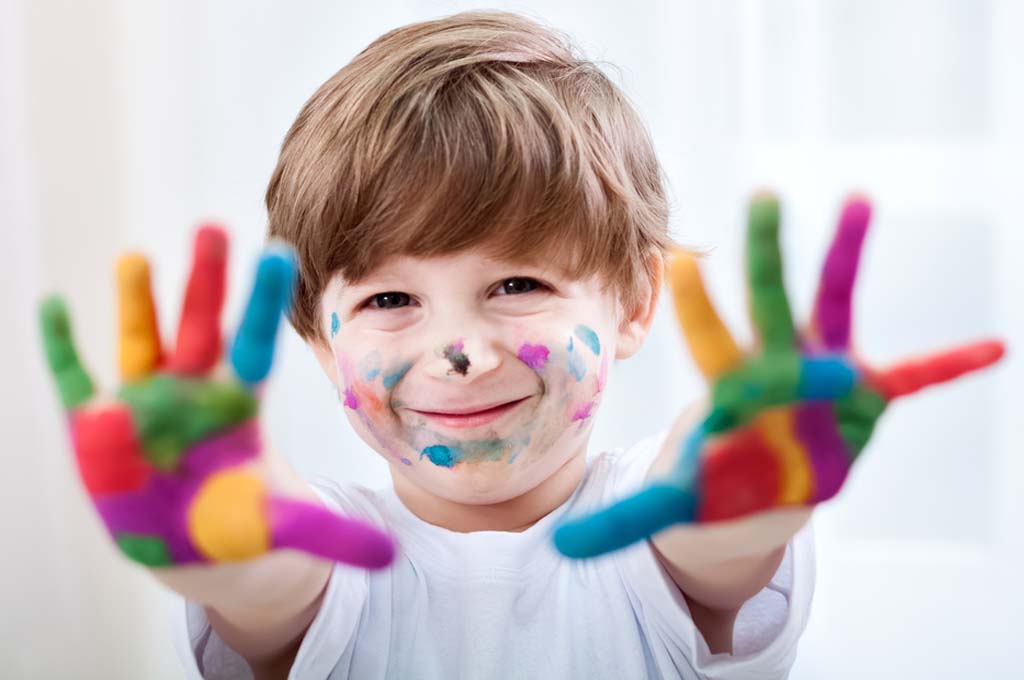Children are a curious and inquisitive lot and love to enjoy every moment doing and creating something they love. They do not mind smearing themselves with paint as much as the paper. They will soak a brush in colour and enjoy the sound the brush makes as they move it erratically across the paper.
The attention span of toddlers and preschoolers is short, and they do not necessarily focus on creating a finished product. Many parents do not realise the importance of a “let go” approach where the children can enjoy the process of creation. Children who are allowed to enjoy those moments without external intervention are better off in the long run.
Why Is Art Important?
- When a child manipulates a paintbrush or a pencil on a wall or lipstick on a mirror, it helps them improve their motor skills.
- Children learn the basics of math by counting pieces and items.
- They love to experiment with things around them, such as their toys, mostly by breaking them, and it may be no less than a scientific experiment.
- Fostering creativity is all about allowing the child to explore, discover, and experiment. In the process, the child’s mental, emotional, and social abilities get developed. They learn to analyse and solve whatever they are doing.
- When you allow children to see the results of what they are doing, it boosts their self-confidence. When they learn through error, they learn to think and develop skills to cope and invent when faced with real-world situations beyond their toddler room.
How to Inspire Creativity
There are very simple ways to foster creativity through art, such as:
- Allow Them To Create A Mess – Let the child experiment with paint, crayons, and other mediums, even though they may create a mess. Set a separate place for this activity in or around your house.
- Desist From Giving Direction – Encourage your child to experiment without giving instructions about what to do. Let the child decide what he/she wants to paint, draw, etc.
- Focus on the Art Aspect – When your child shows what she has painted or drawn; focus on asking about the process. Ask questions like “who is this, and what are you showing in this?” and she will tell you all about her artwork.
- Don’t Try To Work With Your Children – It is frustrating for children to see parents drawing something similar to what they are sketching. Be around as a support to encourage and appreciate their art.
- Let Their Artwork Be the Way It Is – When a child shows you the final work with enthusiasm, appreciate it rather than suggesting improvements. Let them feel that they have created something good.
Encourage them to be Creative
If your child has an interest in art, encourage him to enjoy the process and allow them to go beyond just playing around with crayons, paints, or markers. Take him with you to collect some natural materials like leaves, flowers, sticks, stones, pine-cones, etc. and ask him to arrange them on a black canvas. You will see your child creating patterns and designs from these materials.
The general impression is that creativity is inborn and rare and does not arise from teaching. Going ahead, your child may not become a Picasso, but having developed the trait may become creative in the field of his or her choice later in life. Creativity is not restricted to art alone but is a trait that is useful in any field like science, literature, architecture, etc. Its seeds can be sown in childhood through art.
If you want to know more about imaginative play for preschoolers at Clovel Childcare Early Learning Centre, don’t hesitate to get in touch with us. Just give us a call at 1300 863 986 or fill in this contact us form.
Thanks for reading,
Clovel Childcare
1300 863 986











